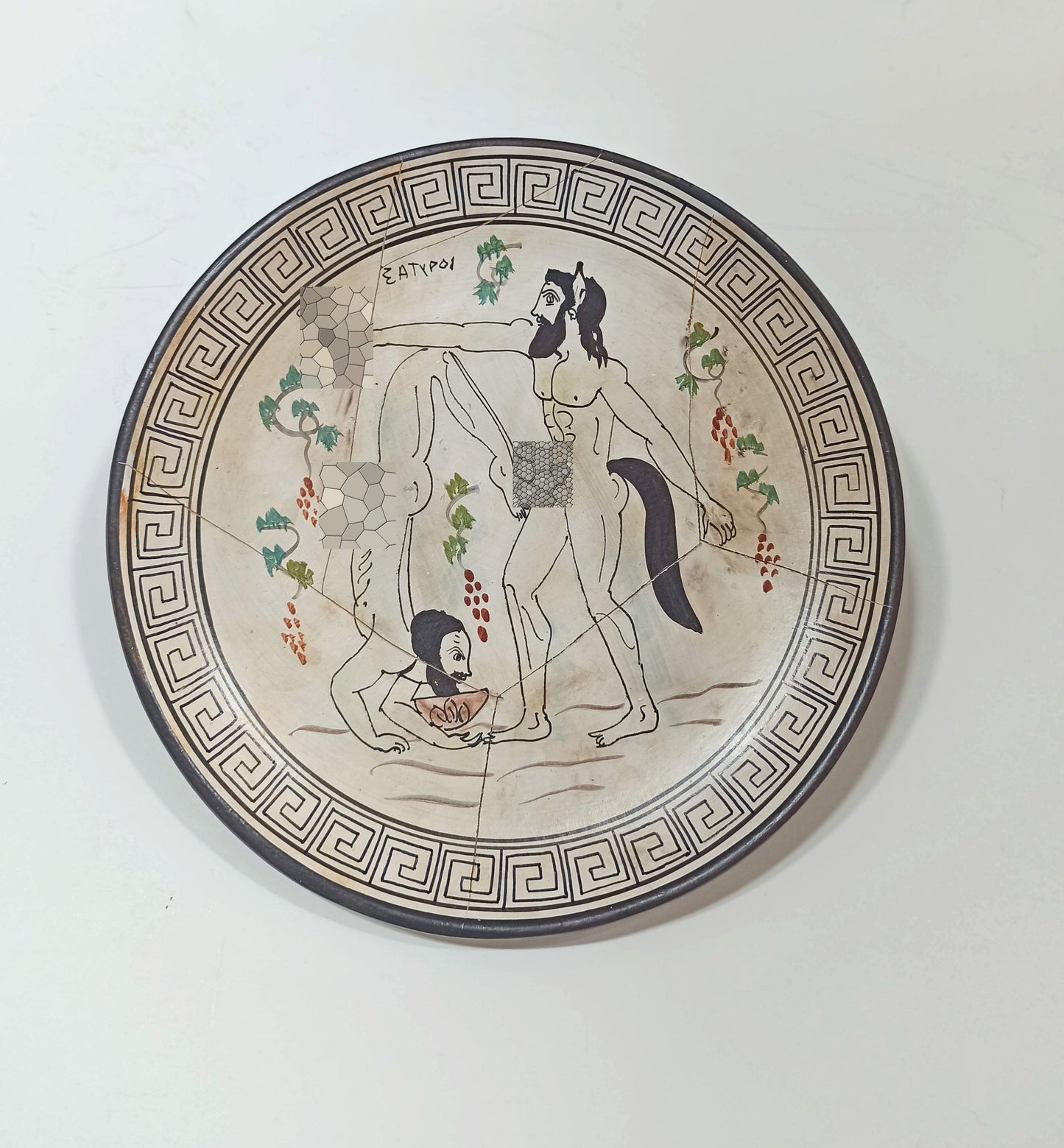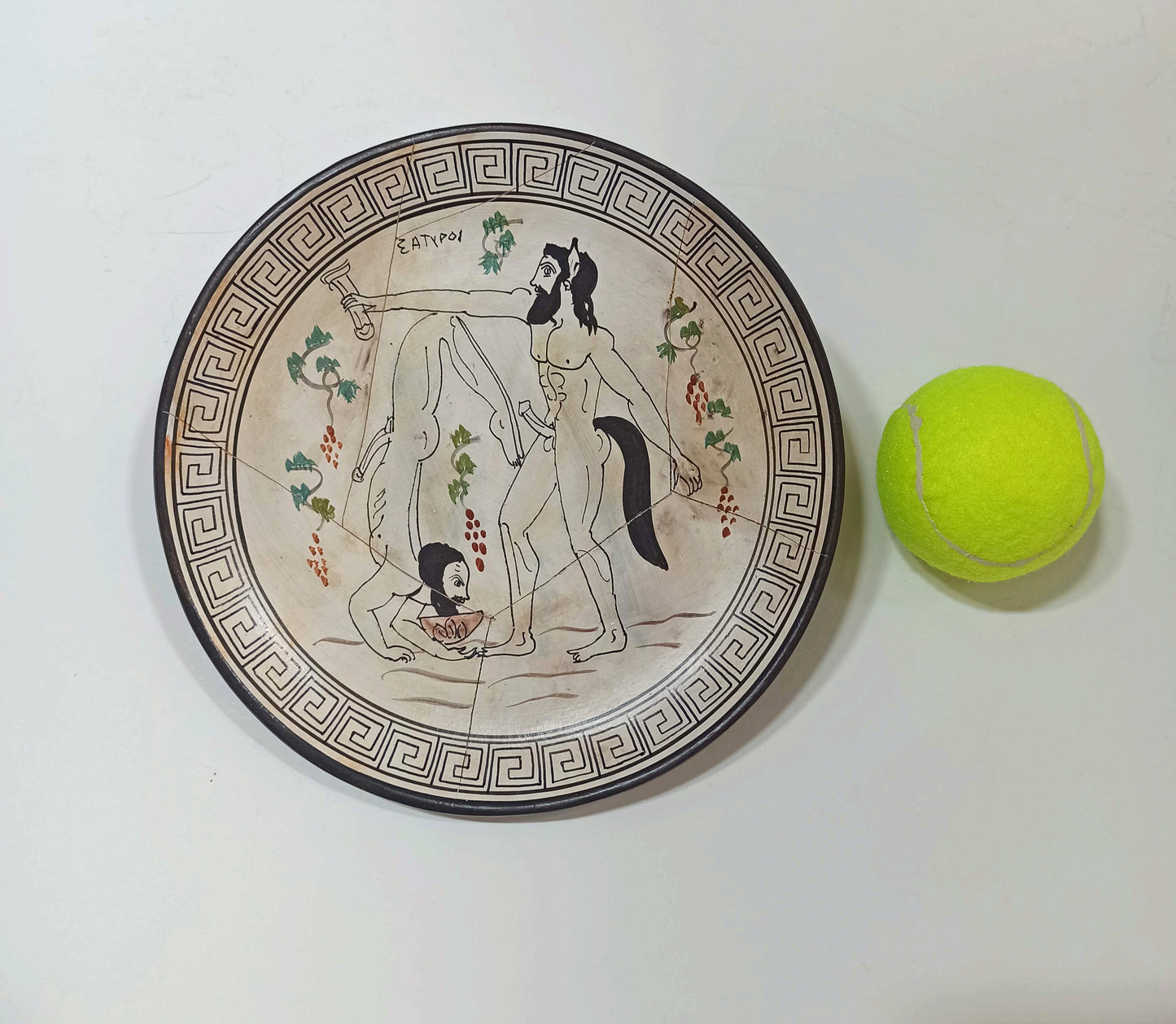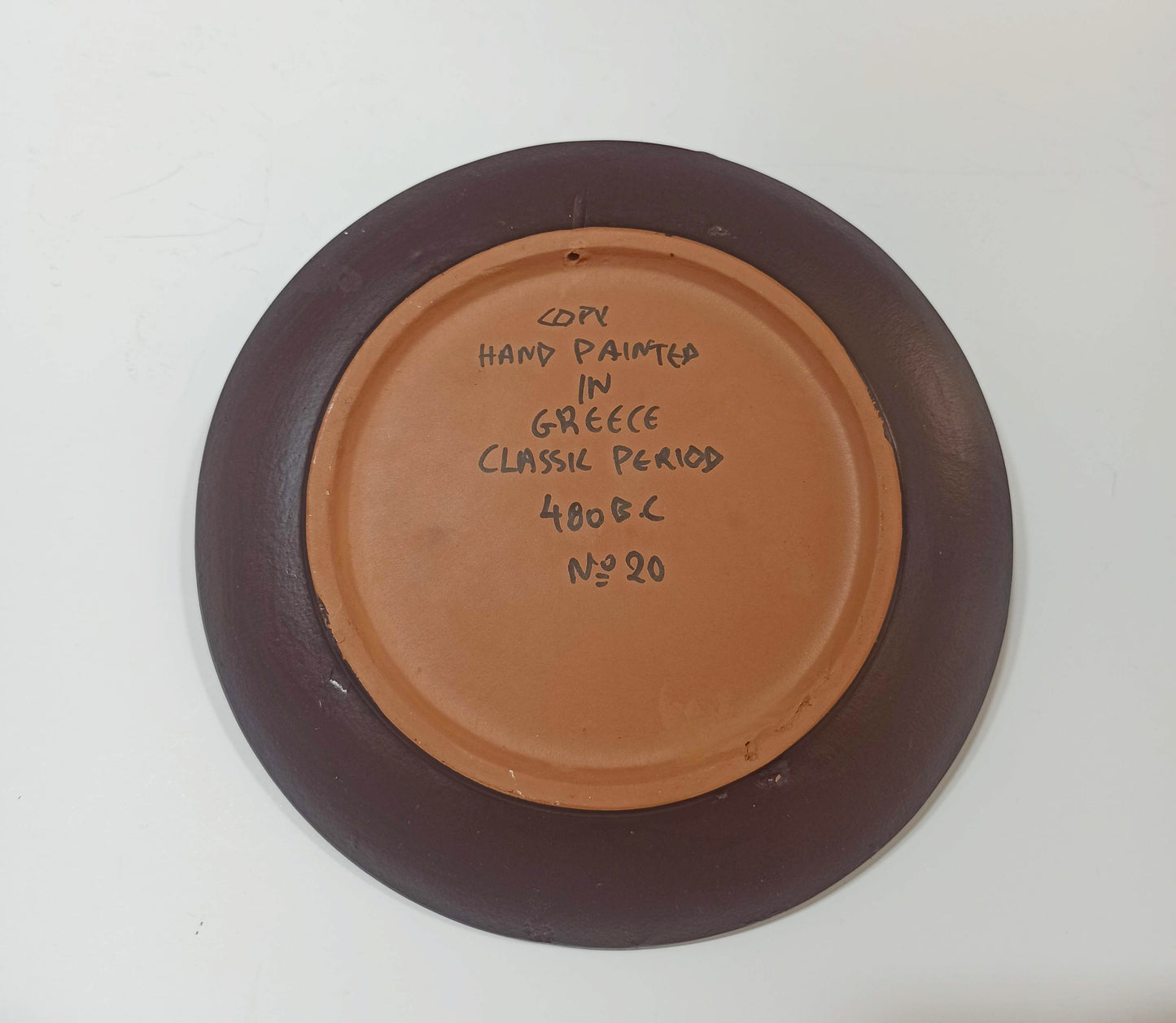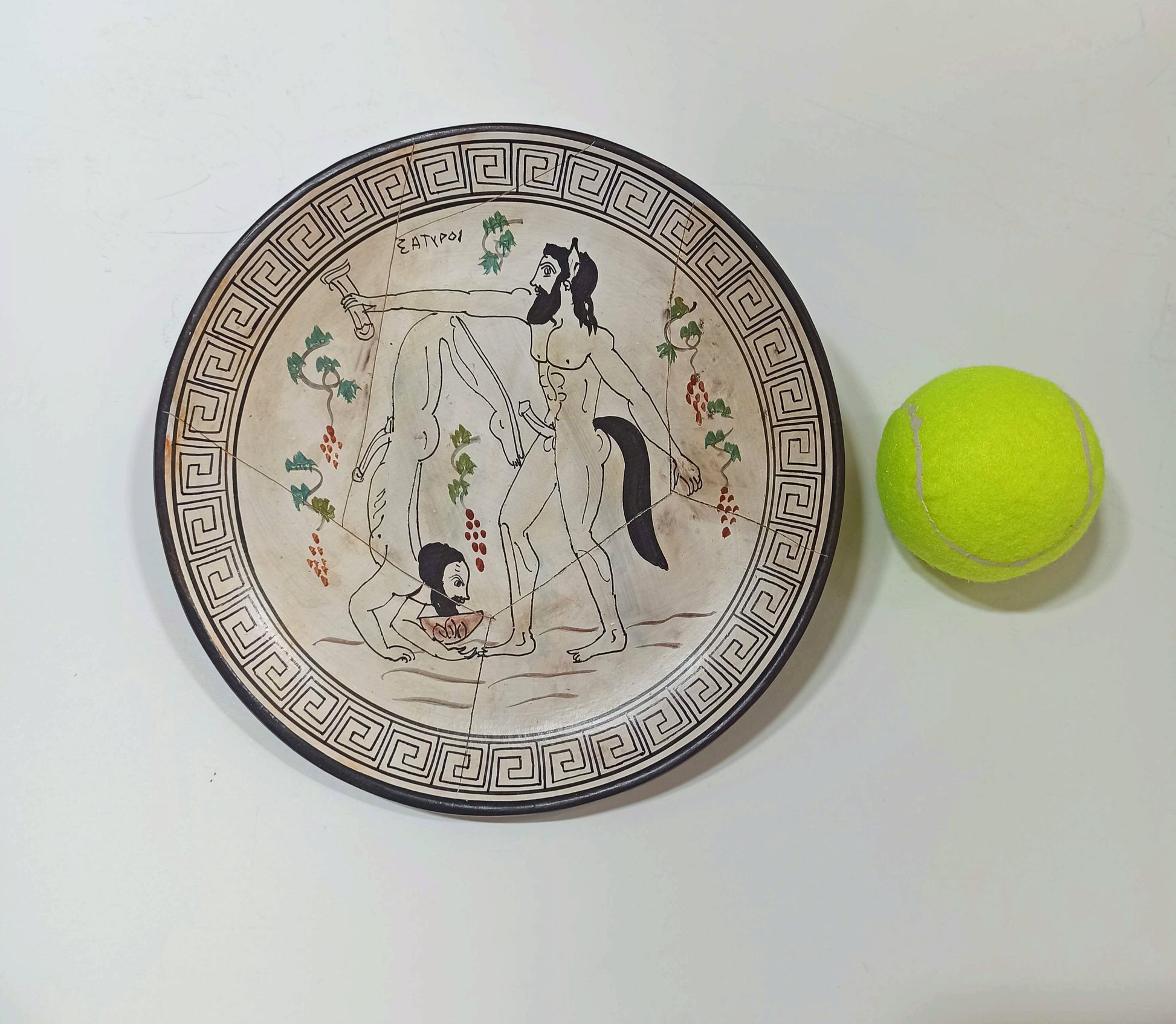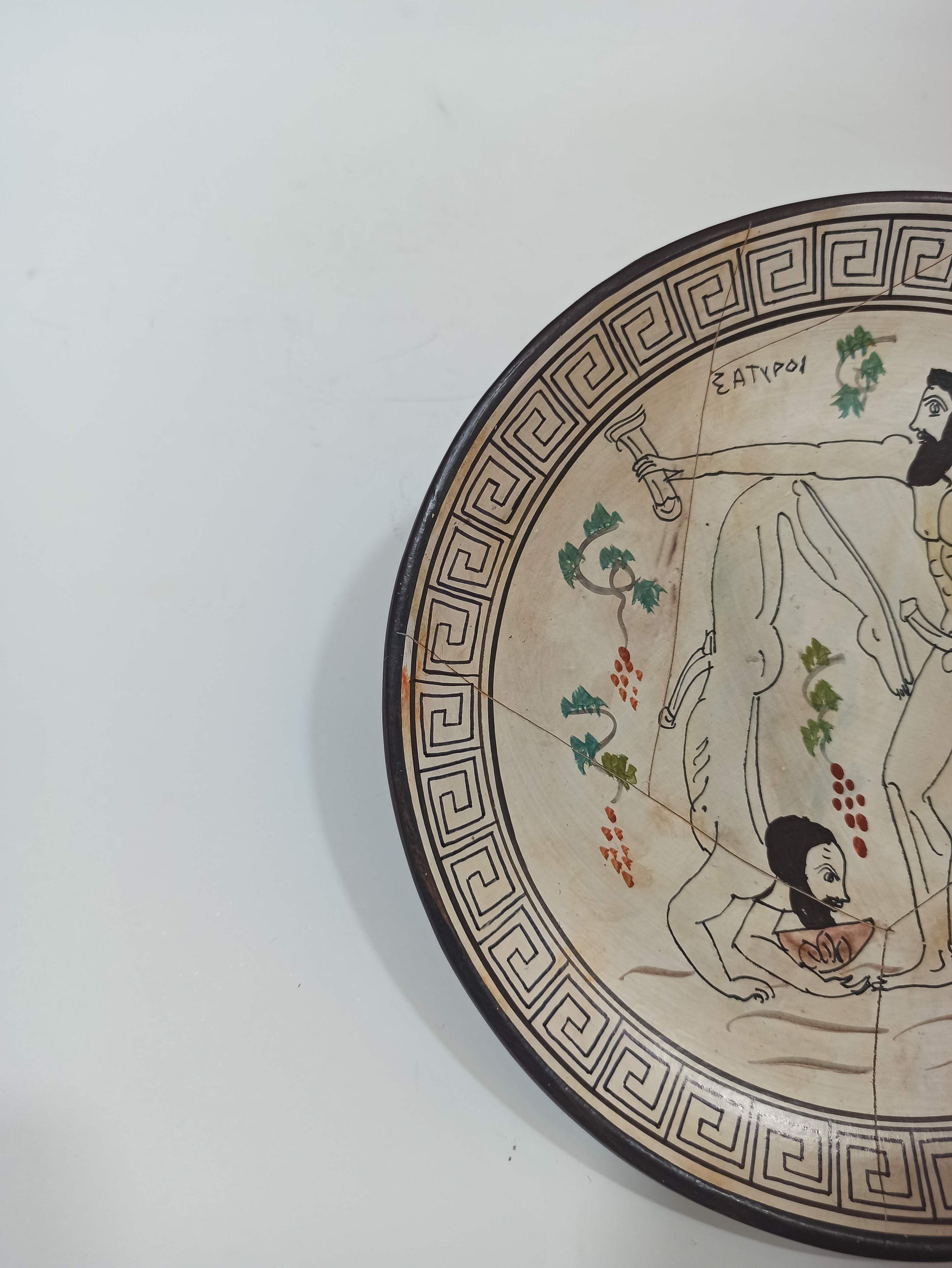Gallery Demeter
Satyrs - Male woodland creatures - Attendans of Pan and Dionysus - Ready for Every Physical Pleasure - Crackle Look - Ceramic - Handmade
Satyrs - Male woodland creatures - Attendans of Pan and Dionysus - Ready for Every Physical Pleasure - Crackle Look - Ceramic - Handmade
Regular price
€79,90 EUR
Regular price
Sale price
€79,90 EUR
Unit price
per
Tax included.
Shipping calculated at checkout.
Couldn't load pickup availability
Condition: New, Handmade in Greece
Diameter: 20 cm - 7,9 inches
Weight: 350 g
Material: clay, paint, ceramic, terracotta
In Greek mythology satyrs are a troop of male companions of Pan and Dionysus that roamed the woods and mountains. The word Satire, meaning human follies or mistakes, comes from the word Satyr.
As Dionysiac creatures, they are lovers of wine, women, and boys, and are ready for every physical pleasure. They roam to the music of pipes (auloi), cymbals, castanets, and bagpipes, and love to dance with the Nymphs (with whom they are obsessed, and whom they often pursue), and have a special form of dance called sikinnis. Because of their love of wine, they are often represented holding winecups and appear often in the decorations on winecups.
Satyrs are described as roguish but faint-hearted folk — subversive and dangerous, yet shy and cowardly. They are also often depicted as fumbling, joking, and careless creatures.
Satyrs are male goat-human hybrids with the torso and head of a man, and in Greek tradition with the legs, and tail of a horse. Originally, Satyrs also had human feet before Roman alterations. They are often depicted with flat noses, large pointed ears, long curly hair, and full beards, with wreaths of vine or ivy circling their balding heads.
"Satyresses" were a late invention of poets, and female Satyrs are rare to uncommon even in more modern depictions.
Satyrs acquired their goat-like aspect through later Roman conflation with Faunus, a carefree Italic nature spirit of similar temperament. Hence satyrs are most commonly described in Latin literature as having the upper half of a man and the lower half of a goat. In Roman art, ature Satyrs have long goat's horns, while juveniles are often shown with bony nubs on their foreheads.
The satyr play was a lighthearted follow-up attached to the end of each trilogy of tragedies in Athenian festivals honoring Dionysus. These plays would take a lighthearted approach to the heavier subject matter of the tragedies in the series, featuring heroes speaking in tragic iambic verse and taking their situation seriously as to the flippant, irreverent and obscene remarks and antics of the satyrs.The only remaining satyr plays are "Cyclops" by Euripides, and the fragments of "The Tracking Satyrs (Ichneutae)" by Sophocles. The groundbreaking tragedy playwright Aeschy
ΜΠΑ Π20 Νο 20 ΣΑΤΥΡΟΙ - 15
Diameter: 20 cm - 7,9 inches
Weight: 350 g
Material: clay, paint, ceramic, terracotta
In Greek mythology satyrs are a troop of male companions of Pan and Dionysus that roamed the woods and mountains. The word Satire, meaning human follies or mistakes, comes from the word Satyr.
As Dionysiac creatures, they are lovers of wine, women, and boys, and are ready for every physical pleasure. They roam to the music of pipes (auloi), cymbals, castanets, and bagpipes, and love to dance with the Nymphs (with whom they are obsessed, and whom they often pursue), and have a special form of dance called sikinnis. Because of their love of wine, they are often represented holding winecups and appear often in the decorations on winecups.
Satyrs are described as roguish but faint-hearted folk — subversive and dangerous, yet shy and cowardly. They are also often depicted as fumbling, joking, and careless creatures.
Satyrs are male goat-human hybrids with the torso and head of a man, and in Greek tradition with the legs, and tail of a horse. Originally, Satyrs also had human feet before Roman alterations. They are often depicted with flat noses, large pointed ears, long curly hair, and full beards, with wreaths of vine or ivy circling their balding heads.
"Satyresses" were a late invention of poets, and female Satyrs are rare to uncommon even in more modern depictions.
Satyrs acquired their goat-like aspect through later Roman conflation with Faunus, a carefree Italic nature spirit of similar temperament. Hence satyrs are most commonly described in Latin literature as having the upper half of a man and the lower half of a goat. In Roman art, ature Satyrs have long goat's horns, while juveniles are often shown with bony nubs on their foreheads.
The satyr play was a lighthearted follow-up attached to the end of each trilogy of tragedies in Athenian festivals honoring Dionysus. These plays would take a lighthearted approach to the heavier subject matter of the tragedies in the series, featuring heroes speaking in tragic iambic verse and taking their situation seriously as to the flippant, irreverent and obscene remarks and antics of the satyrs.The only remaining satyr plays are "Cyclops" by Euripides, and the fragments of "The Tracking Satyrs (Ichneutae)" by Sophocles. The groundbreaking tragedy playwright Aeschy
ΜΠΑ Π20 Νο 20 ΣΑΤΥΡΟΙ - 15
